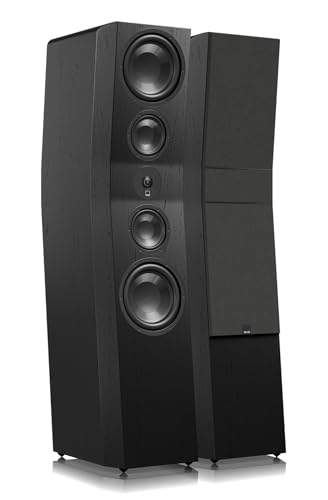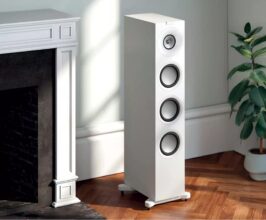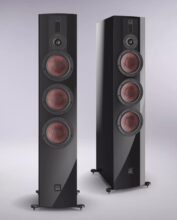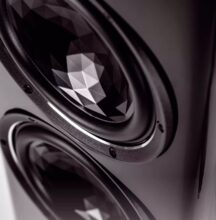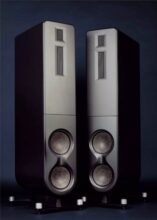SVS Ultra Evolution Titan vs Ultra Evolution Bookshelf
In March 2024, we had the pleasure of experiencing the new SVS speakers from the Ultra Evolution series at their European premiere. Now, we’ve had the chance to thoroughly test two of the most exciting models from the series.
Introduction
In this part of the world, the American company SV Sound is best known for its subwoofers. While SVS is the largest subwoofer manufacturer globally, they also produce speakers. In Europe, the compact active Prime Wireless speaker is probably the most well-known. However, in the U.S., there is a broader range of models, now topped by the new Ultra Evolution series.
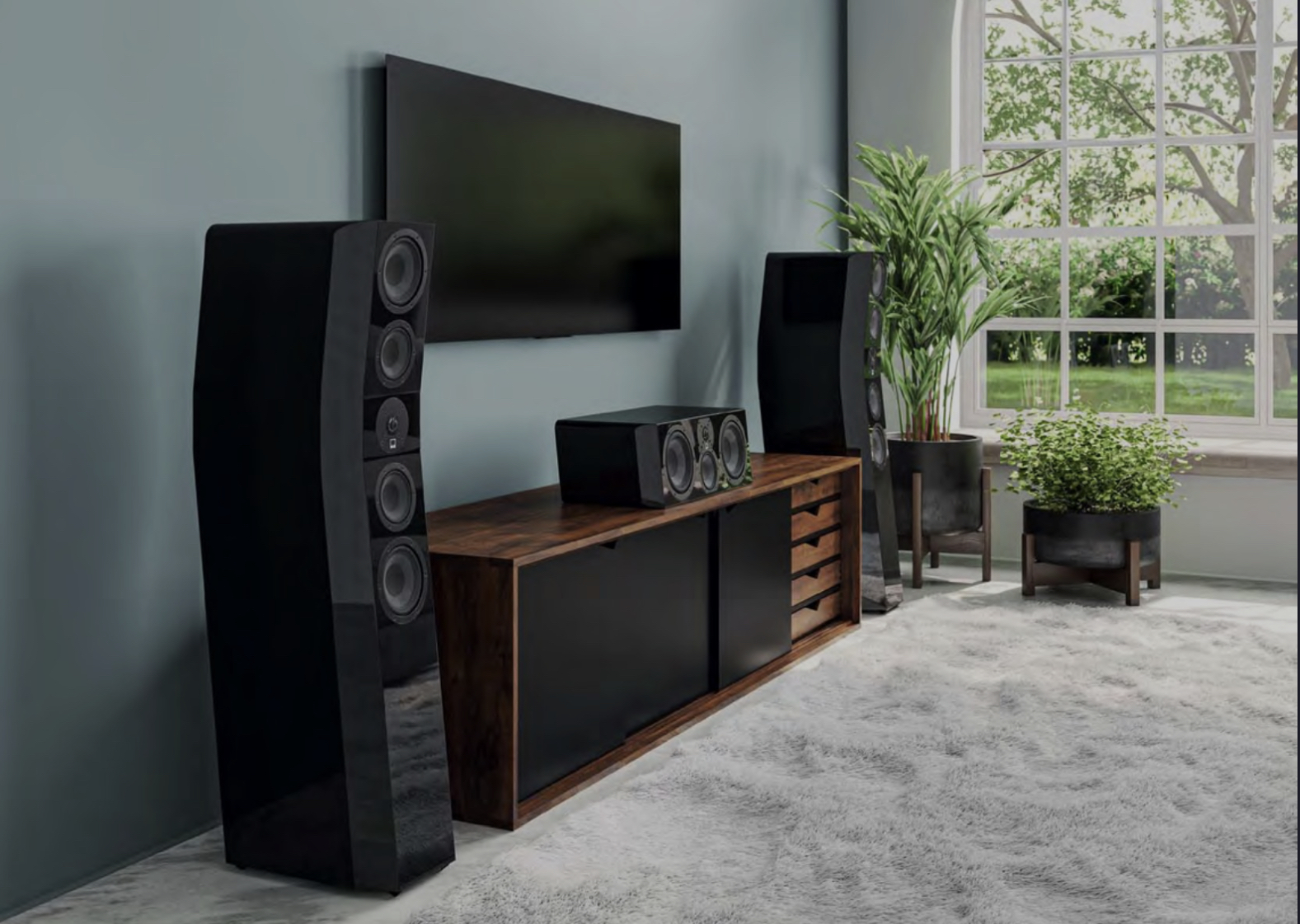
This series includes three floor-standing speakers, two bookshelf models, a center speaker, and an Atmos speaker. We took a closer look at the middle-sized floor-standing Ultra Evolution Titan (priced at 5,000 euros) and the compact SVS Ultra Evolution Bookshelf (1,500 euros per pair).
When purchasing one of the Ultra Evolution speakers, you can choose between three finishes: Piano Black, Piano White, and Oak veneer. Matching magnetic fabric covers and screw-in elastomer absorber feet are included in the box.
Build And Design
A significant construction difference between the bookshelf and floor-standing models is not only the number of drivers but also their placement. The floor-standing speakers have two additional “active” bass drivers on their rear, driven by the connected amplifier. The Titan, for instance, features four 6.5-inch woofers in a “Force-Balanced Opposed Array.” The idea behind this design, also found in subwoofers, is that when drivers on opposite sides of the enclosure exert equal and opposite forces, these forces nearly cancel each other out. This dramatically reduces cabinet vibrations, and the less a cabinet resonates, the better the sound. A German developer recently told me that if given the choice between building a speaker with expensive drivers and a simple enclosure or one with a sophisticated enclosure and simpler drivers, he would always choose the better enclosure.
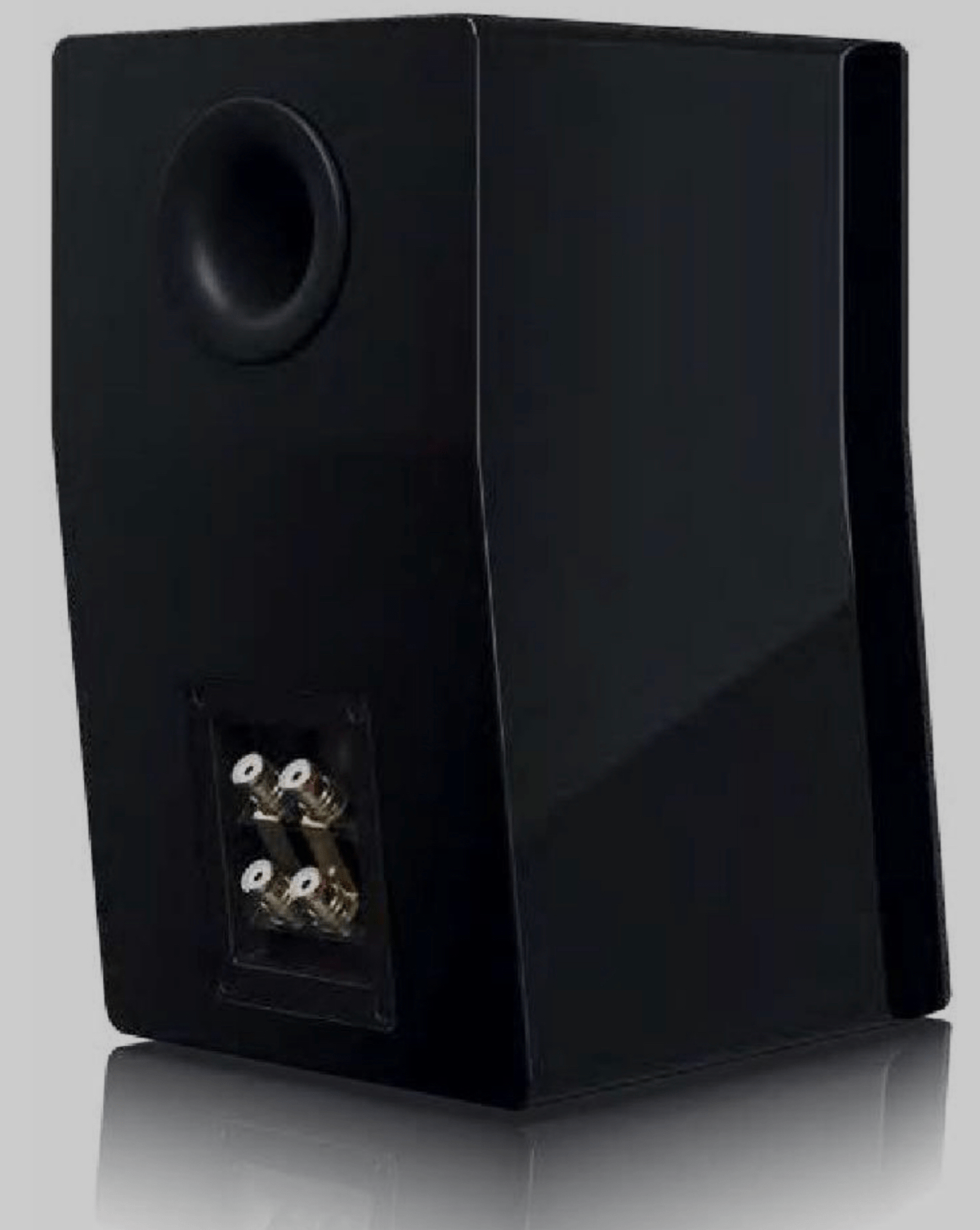
In addition to the four 6.5-inch long-throw woofers, the Ultra Evolution Titan has two 4.5-inch midrange drivers per channel, all equipped with fiberglass composite cones. The aluminum voice coils are ventilated to prevent high temperatures from causing stress and to avoid air compression artifacts at higher volumes. The 4.5-inch woofer/midrange driver in the Bookshelf model shares these features.
Diamond-Enhanced Highs
The tweeters in the Ultra Evolution models are 2.45 centimeters in diameter. What makes them special is the diamond-like carbon coating on the aluminum domes. This not only improves resonance behavior but also increases stiffness—and cost. SVS is committed to this method of refining tweeters because it greatly enhances transient response and extends the frequency range well beyond human hearing.
The crossover frequencies for the Titan are set at 160 Hz and 1.9 kHz, while the Bookshelf model’s crossover is at 1.8 kHz. SVS emphasizes the use of high-quality capacitors, coils, resistors, and durable circuit boards in all their models. Overall, the craftsmanship is excellent, with no imperfections to be found.
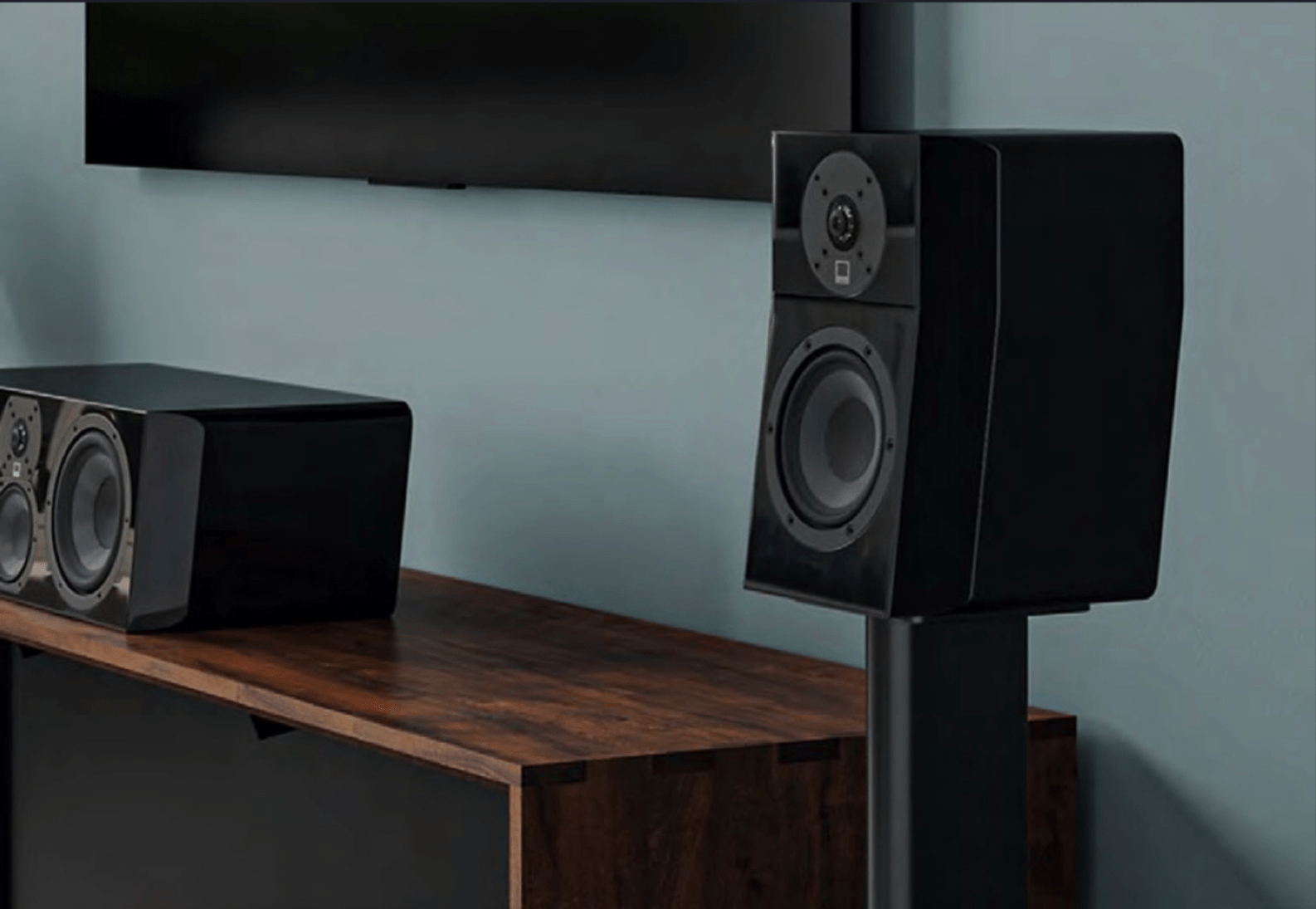
From the Side
When you view the speakers from the side, one detail stands out: the front baffle is curved, causing the tweeter to be positioned slightly behind the midrange and woofers, or in the case of the Bookshelf model, behind the woofer/midrange driver. This design ensures that sound waves from all drivers reach your ears simultaneously. The cabinet geometry introduces a desired microsecond-level time delay between the drivers. This improves timing and sound imaging, something we can confirm without giving too much away before the listening test.
Let’s talk more about the cabinet: The 25-millimeter thick front baffle is designed to provide near-ideal working conditions for the drivers. The side panels are 18 millimeters thick, and inside, you’ll find bracing and soundproofing measures. Therefore, resonances—especially considering the Force-Balanced Opposed Array in the floor-standing models—are not a major issue in the Ultra Evolution series. Additionally, the baffles are chamfered to reduce edge diffraction, further minimizing any negative impact on sound quality. It’s clear that many of the great ideas from SVS CEO Gary Yacoubian went into the design of this series.
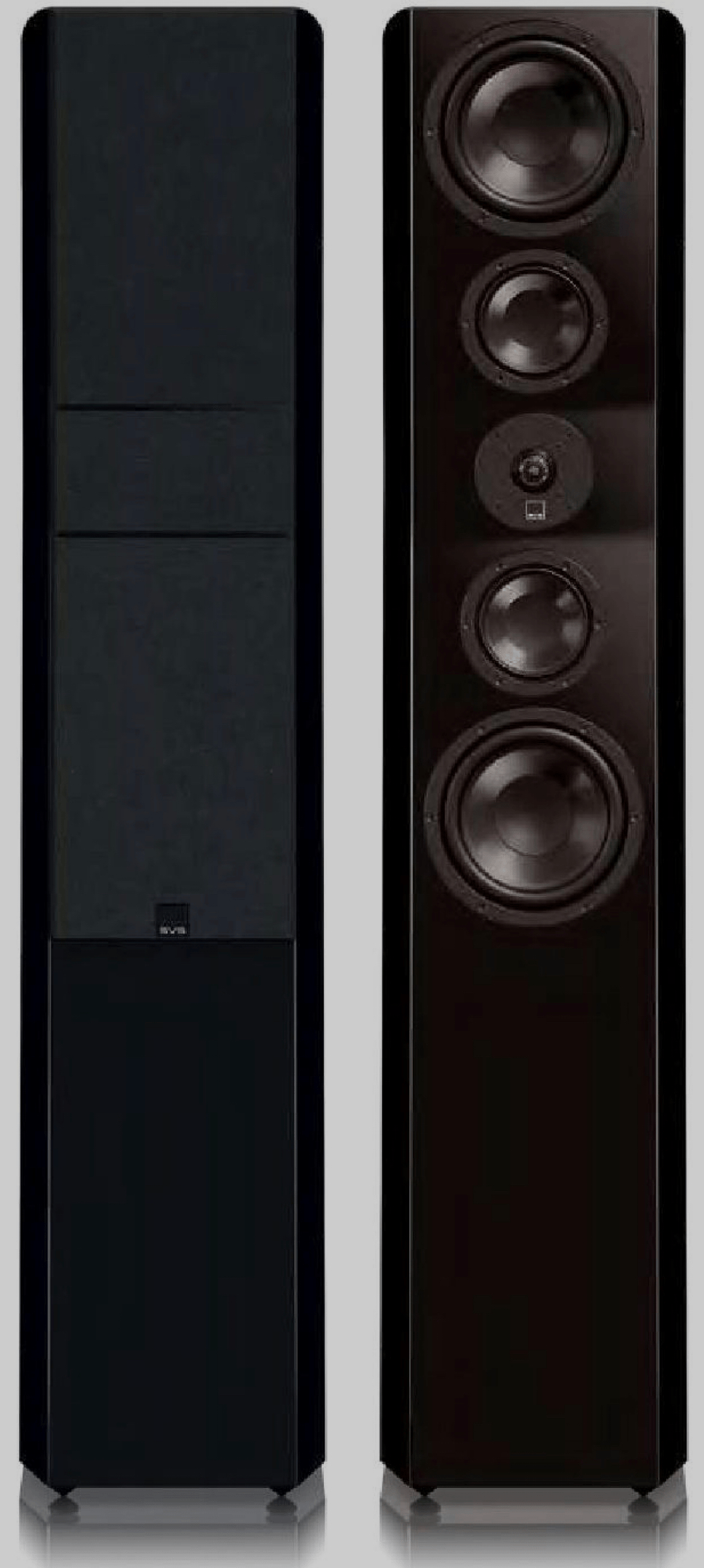
Sound Quality
We started with the Titan floor-standing speaker. Right from the start, it offered a large soundstage, with clear and airy highs, even though the treble was somewhat restrained. As the saying goes, “we hear with our eyes,” and with a large speaker featuring four bass drivers per side, airiness isn’t the first thing one expects. The Titan can pleasantly surprise you. It certainly surprised me with this quality back in March during its European premiere. With the Titan, Natalie Merchant’s first solo album “Tigerlily” also gained a comforting warmth, without sounding dull, slow, or heavy. The impression is one of a more expensive speaker. The way the smaller floor-standing speaker presented details was unassuming, which enhanced the listening experience and made the speaker perfectly suited for long-term enjoyment. What stands out most is the deep imaging. Instruments, voices, and effects repeatedly appeared deeper in the soundstage than expected, whether it was Queen or Brad Mehldau. Additionally, the imaging remained rock-solid, even in the midst of complex passages.
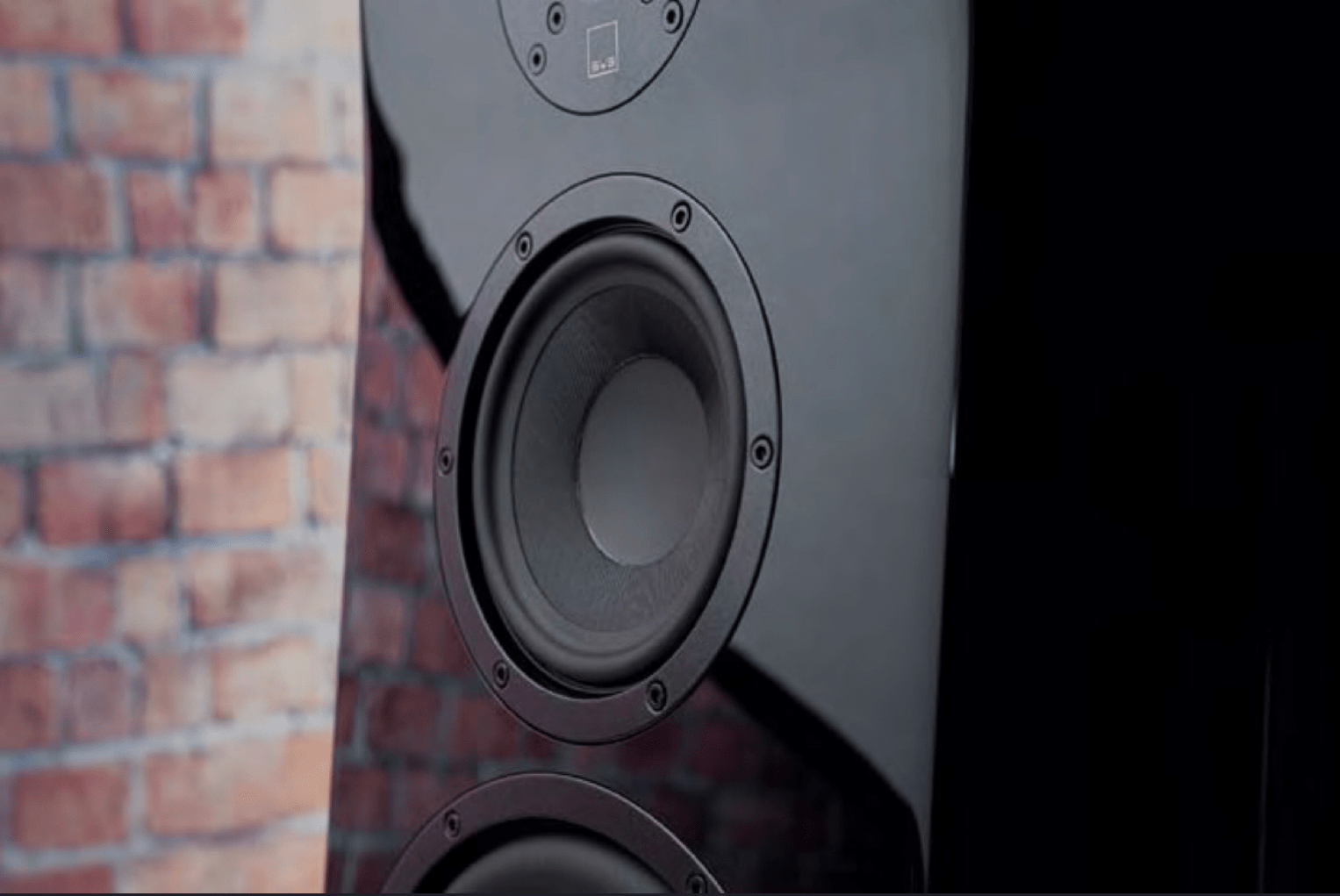
SVS Ultra Evolution Titan
This is a 3-way bass-reflex floor-standing speaker with four woofers, two of which are on the rear side. The frequency response slopes down by about 6 dB from the bass to the treble, maintaining a balanced and smooth curve with minimal variation across three measurement positions, indicating consistent sound dispersion. It delivers good deep bass with a lower cutoff frequency of 35/31 Hz (-3/-6 dB). Distortion increases evenly towards the bass, with a decent maximum level of 100 dBSPL. It has an average sensitivity of 83 dB/2 V, and due to its impedance minimum of 2.3 at 90 Hz, it’s recommended to use a current-stable amplifier that provides 100 W at 2 ohms. The waterfall plot shows no noticeable resonances. AUDIO Rating: 68.
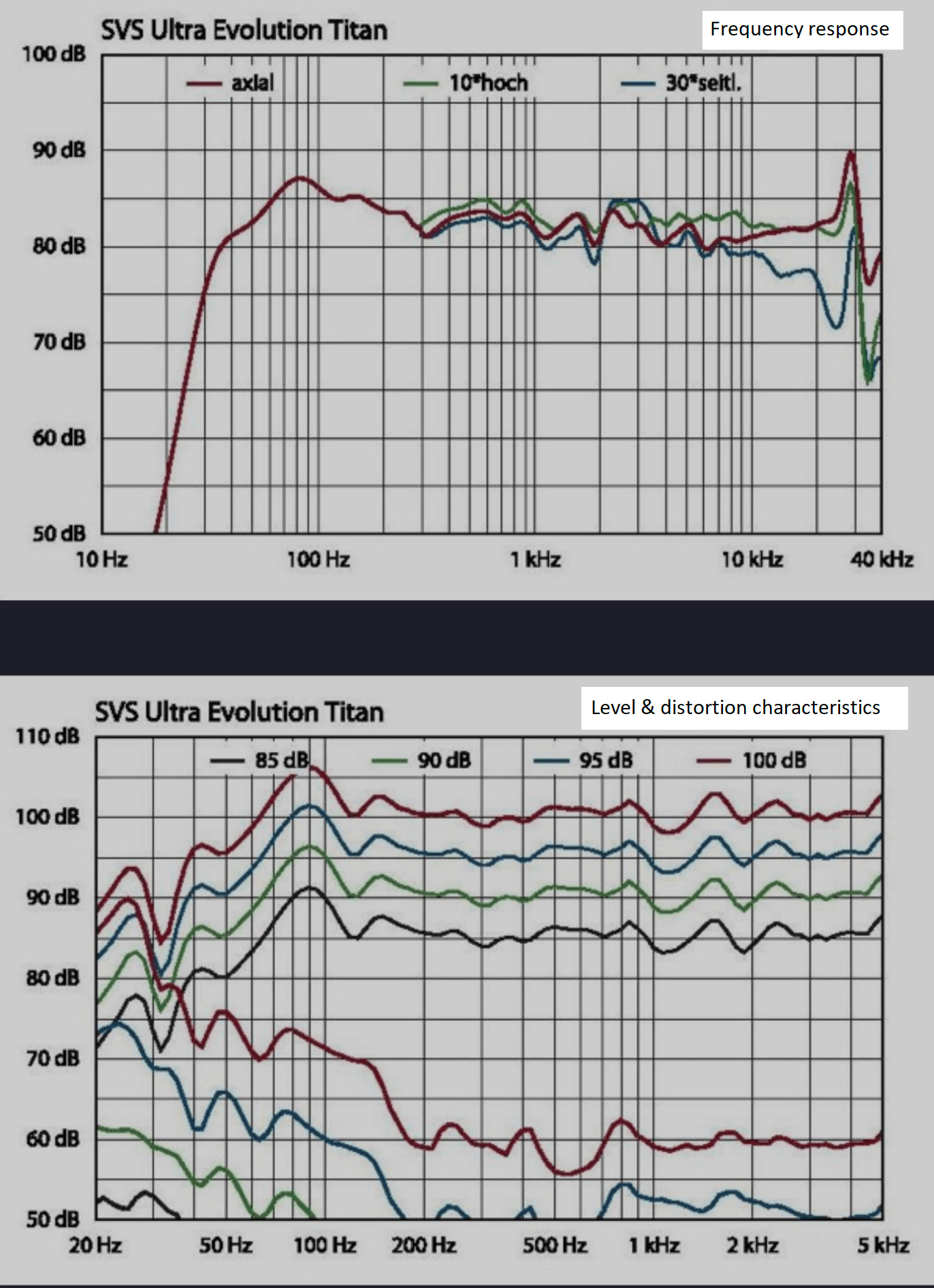
Small vs. Large
Switching to the smaller Bookshelf speaker revealed that it plays noticeably brighter. The imaging is similarly impressive, but it lacks the punch and pressure that the larger speaker delivers—naturally. However, considering its size, the Bookshelf offers an excellent bass performance, making it less ideal for placing on a shelf despite the name suggesting otherwise. Whether placed near a wall or freely positioned, it performs best when it has space to breathe. If you can’t properly position a floor-standing speaker like the Titan (ideally placed freely), the Bookshelf is an excellent alternative with a slightly brighter sound character, which I personally enjoy. Only in direct comparison with the Titan does the Bookshelf appear slightly more forward and a bit thinner. Both share a strong sense of rhythm and clean, emotionally engaging vocal reproduction, making any music genre an immersive experience.
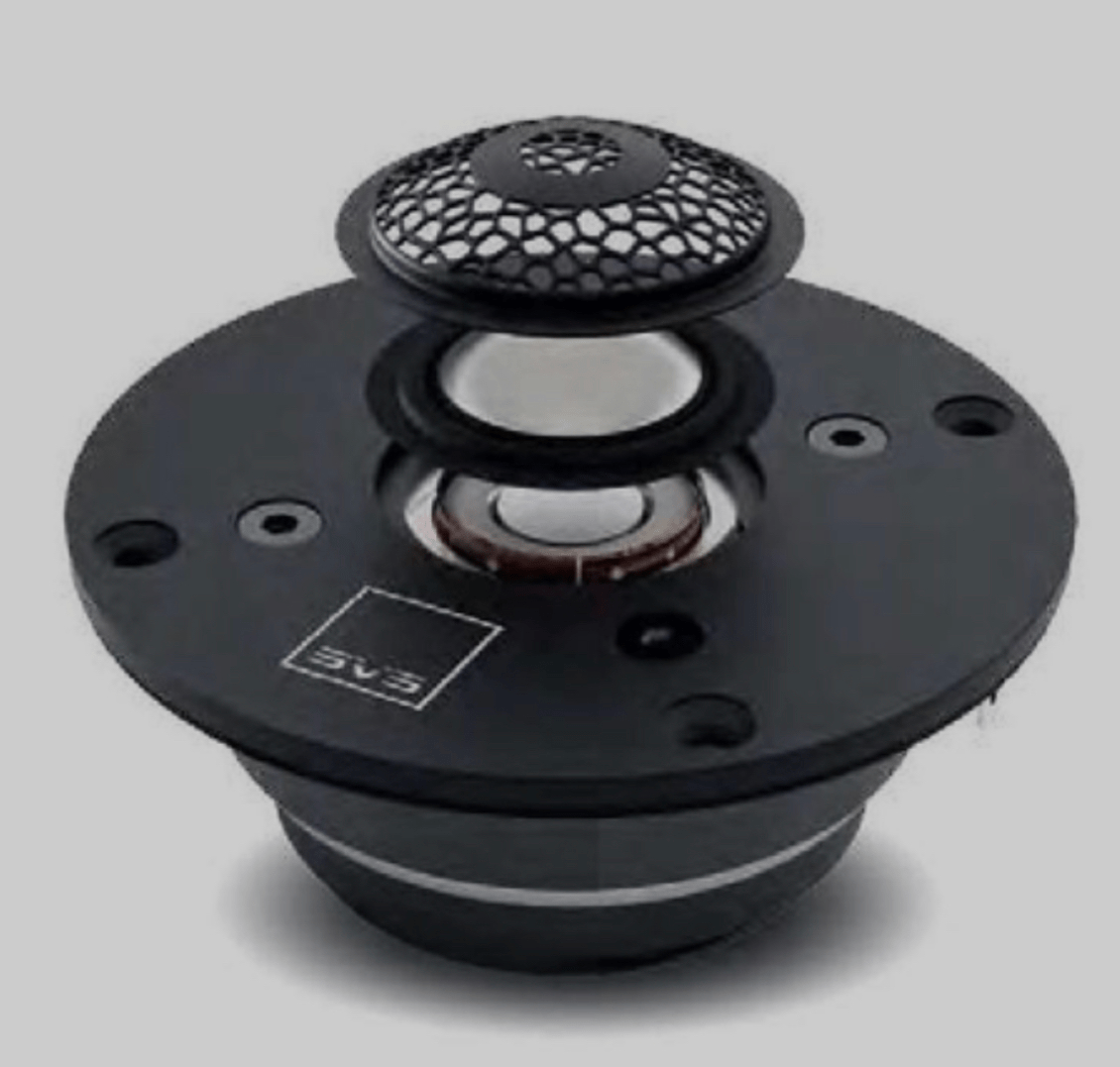
SVS Ultra Bookshelf
This is a compact 2-way bass-reflex bookshelf speaker with a largely linear frequency response and consistent sound dispersion. It has only a slight bass boost (+3 dB at 120 Hz) and extends down to 50 Hz (-3 dB) or 43 Hz (-6 dB). Distortion levels are similar to those of the floor-standing model, offering an impressive maximum sound pressure level of 104 dBSPL for its size. With an average sensitivity of 83 dB/2 V and a nominal impedance of 4 ohms, it’s not demanding in terms of amplifier choice. Recommended power output ranges from 50 to 120 W (4 Ω, 100/104 dBSPL). The waterfall plot shows no noticeable resonances. AUDIO Rating: 64.
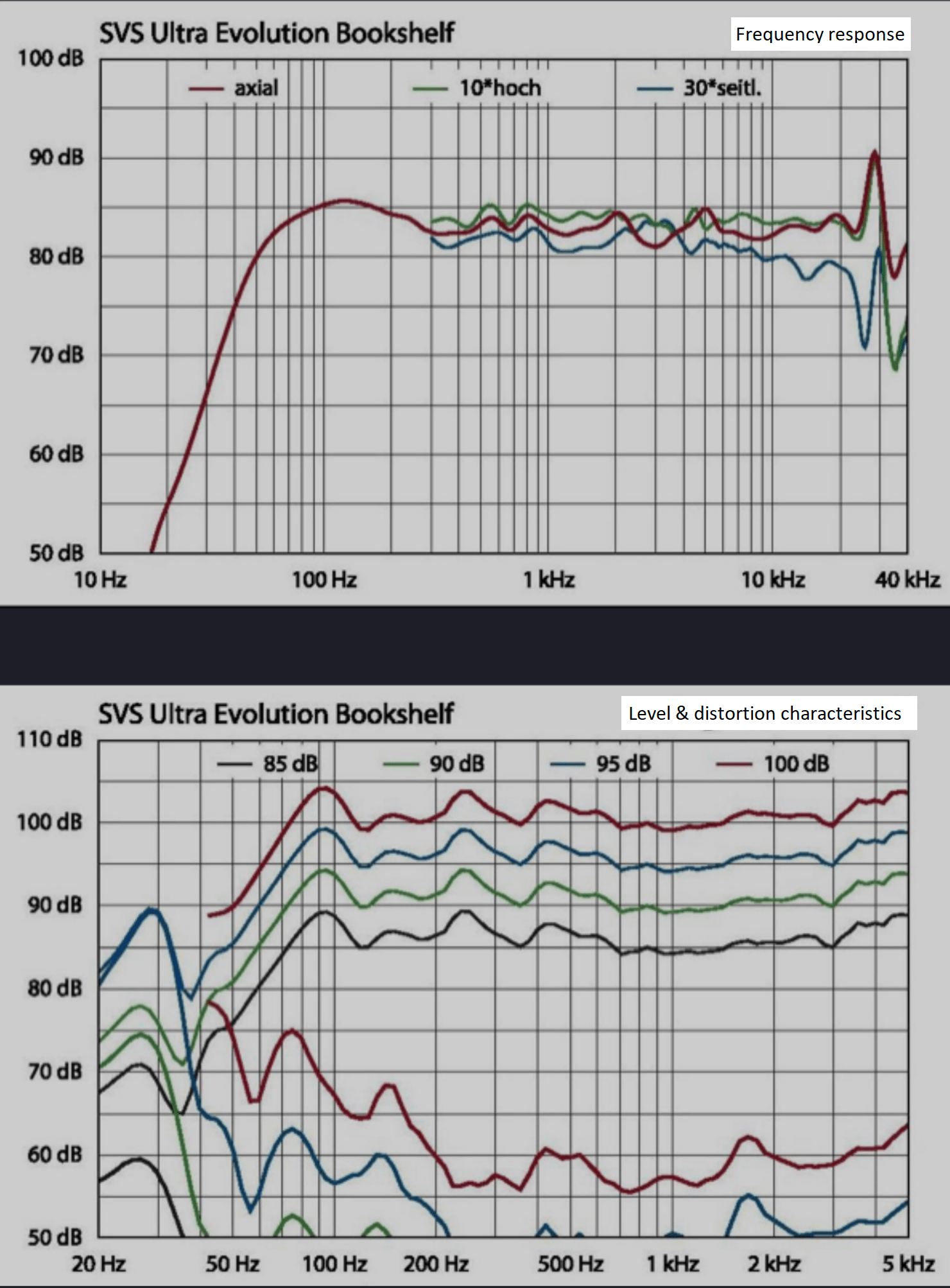
Specifications
Distributor
SVSound GmbH
Website
svsound.de
Price
€5000
Warranty
2 years
Dimensions (W x H x D)
25 x 118.2 x 44 cm
Weight
31.6 kg
Finish Options
Veneer/Foil/Lacquer: •/-/•
Colors
Black, White, Black Oak
Design Principles
Passive, Bass Reflex
Room Adaptation
None
Special Features
Force-Balanced Opposed Array
Verdict
This double act hits the mark! Both the compact Bookshelf and the Titan speakers are impressive given their price. If you have a large room and the proper listening distance, the Titan offers a fascinating blend of power and finesse. It moves a lot of air, yet despite its bass power, it remains airy and doesn’t overemphasize the bass. It’s a well-balanced speaker! For those who need something smaller or prefer a slightly brighter sound, the Bookshelf is hard to beat for the price. It’s lively, punchy, rhythmic, and offers imaging that nearly matches the larger model. We can only congratulate Gary Yacoubian on this successful release!
TEST RESULTS
Neutrality: 17
Resolution: 16
Imaging: 18
Dynamics: 17
Bass: (Not provided in the source text)
Sound Quality (max. 100): 86
Lab Analysis (max. 50): 38
Product Quality (max. 50): 41
AUDIO BENCHMARK
Overall Rating: 165 points
Price/Performance
Very good
When you purchase through links on our site, I may earn an affiliate commission. Here’s how it works.





